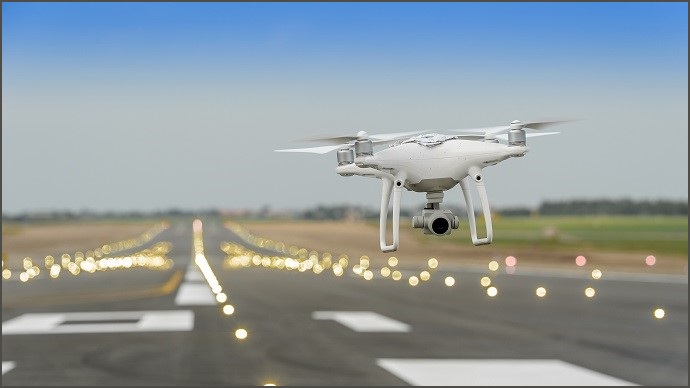Every tech entrepreneur dreams of the moment when sudden demand transforms a pie-in-the-sky idea into the next tech unicorn.
But Sydney-based DroneShield was already growing rapidly last December, when two drones at London’s Gatwick Airport spawned PR chaos, a £459,000 ($A834,000) police bill, and a three-day airport shutdown.
Gatwick serves around 90 airlines, with UK airline EasyJet alone cancelling over 400 flights and incurring £10m ($A18m) in losses for “customer welfare costs”.
The incident still has not been fully explained, but its disruption caught agitators’ attention– with police threatening life sentences after protest group Extinction Rebellion said it would use drones to shut down Heathrow Airport.
Drone incursions have become a nightmare scenario for airports after a string of incidents at the likes of Heathrow, Dubai World Central International, and Newark Liberty International.
Authorities’ scramble for countermeasures has put DroneShield front and centre as nervous buyers evaluate products including the DroneGun Tactical rifle, DroneSentry installation unit, wearable RfPatrol drone detector, and vehicle-mounted DroneCannon RW.
The devices monitor radiofrequency bands to identify the communications between a drone and its pilot’s remote controller – helping authorities locate the pilot and, if necessary, jam communications to force the drone to land safely.
Avoiding worst-case scenarios
Consumer drones hit mainstream awareness last year, but DroneShield CEO and managing director Oleg Vornik attributes the five-year-old company’s global success – its 25 employees in 4 offices manage 100 partners in 70 countries – to recognising early on what drones could become.
“Back when we started, drones could fly about 100 metres, had a 2-minute battery life and would smack into a tree and crash,” he laughed. “It was a vision back then to see that drones were going to improve as much as they have.”
“Yet as the technology rapidly develops – becoming easier to fly with longer flight times, increasing payloads, swarming abilities, better cameras and better everything – with all the positive applications come the nefarious applications.”
Terrorists could use low-cost, readily accessible drones to drop explosives, fly into airplane turbines, or shut down nuclear plants by dropping into exposed cooling towers.
Amazon currently sells a $US5699 ($A8160) crop-spraying drone that could carry 10kg of anthrax or ricin for dispersal over crowded areas.
“The terrorism potential is incredible,” Vornik said, “and in those situations it would be virtually impossible to catch the perpetrators if the target doesn’t have any kind of counter-drone intelligence.”

Oleg Vornik (pictured) will be speaking at an ACS event later this month.
Riding the surge in demand
DroneShield has found receptive audiences amongst the world’s militaries, where drones have become both a major tactical opportunity and a defensive threat.
While it doesn’t address the “unmanned airplane” style of drone – such as the $US110m ($A157m) drone whose downing recently caused an international incident between the US and Iran – DroneShield’s core technology is being been regularly updated to stay ahead of “exploding” consumer and industrial drone demand.
Drones were worth $US14.1b ($A20.8b) globally in 2018 and that will triple by 2024, according to one market analysis.
To pre-empt competition from cashed-up defence contractors, DroneShield has partnered with firms like Collins Aerospace Systems to market counter-drone products to an extensive customer base that includes the Australian Defence Force.
Soaring with Australian skills
The Gatwick incident coincided with a share-price surge for the publicly-listed firm, which has a market capitalisation of $29.01m and has been inundated with customer orders as drone awareness skyrockets.
Airports will join military customers – “the military is the kind of market where if there is a need there is a budget,” Vornik said – as key drivers of DroneShield revenues.
And despite increasing competition, Vornik believes Australia’s “incredible amount of talent”, in areas like radiofrequency engineering, jamming, radar, camera, software and hardware, will help it stay ahead of demand.
“Most of what we need we can find in Australia,” Vornik said. “We are an exciting kind of employer to work for and it’s an exciting industry, where the technology across every one of our technological elements is changing all the time.”
“Attracting engineers who are interested in solving problems isn’t difficult,” he added. “We have advantages over larger companies in that we are agile, cost-effective, and able to accumulate bright minds.”
Oleg Vornik will share his experiences in a presentation at the ACS NSW Defence Tech event on Tuesday, 23 July. Click here for more information and to purchase tickets.










